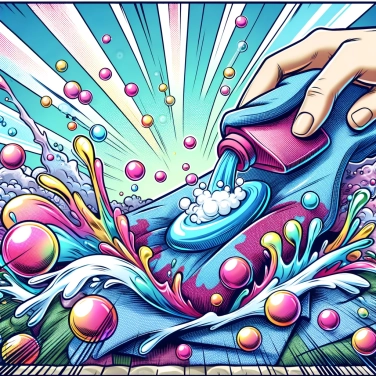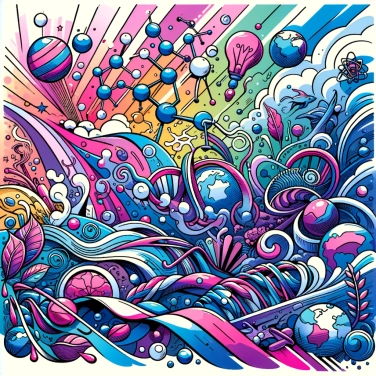Soap removes oil stains because it has both a hydrophilic part that binds to water and a lipophilic part that binds to oil, allowing it to dissolve the oil and remove it from surfaces.

Soap is made of special molecules called surfactants. They have two completely opposite parts: one end that loves water (hydrophilic) and another that greatly prefers fats (hydrophobic). Essentially, soap resembles a mini chemical magic wand with a head naturally attracted to water and a long tail that avoids water to seek refuge in oil or grease. This clever combination explains why soap can grab onto oils and make them easier to wash away with water.
Soap is a somewhat special molecule because it has two very different sides: a head that loves water (hydrophilic) and a long tail that clearly prefers fats and oils (hydrophobic). This hydrophobic tail is attracted like a magnet to oil molecules, as they are very similar chemically (they get along well, so to speak!). So, when you put soap on an oil stain, the hydrophobic tail of the soap will directly stick to the oil, while its hydrophilic head remains turned towards the water. This creates a sort of link between the oil and water, which normally do not get along at all. It is precisely because of this that oil manages to mix with water, and thus to detach from the fabric or surface being cleaned.
Soap has a special molecular structure: one side is attracted to water (hydrophilic) and the other is attracted to oil (hydrophobic). When you use it on an oil stain, the soap molecules spontaneously form tiny spherical clusters called micelles. Their secret? Their core captures and traps the oil particles while their exterior, friendly with water, allows for easy removal during rinsing. In other words, it's like little bubbles where you hide the greasy dirt to get rid of it more easily.
Soap helps to detach oil thanks to its special molecules, but without good friction, the action remains limited. The mechanical action allows the soap to better trap fats in its small micelles, because it disperses the oil droplets and detaches them more effectively from the fabric or the soiled surface. In other words, when you rub, you simply break the bonds between the dirt and the surface, thus facilitating the capture by the soap. Without a minimum of friction, even the best soap is not very useful against oil.
Micelles, these small structures formed by soap when in contact with water, capture oil and dirt inside, making it easy to wash them away with rinse water.
The first soaps that appeared in history were made by mixing animal fats with plant ashes – an ancient technique discovered as early as Babylonian times, about 4,800 years ago!
Solid soap is more eco-friendly than liquid soap: it generally requires less packaging, uses less water in production, and often lasts much longer during use.
In the absence of soap, you can use baking soda or crushed chalk to absorb some of the oil stains on clothes before washing them.
Water alone cannot effectively remove oils because the two substances do not mix. Oil is hydrophobic, meaning it is insoluble in water. Soap acts as an intermediary, allowing oil and water to combine, thus facilitating the removal of the stain.
Yes, there are several natural and eco-friendly options, such as Marseille soap or baking soda, which effectively absorb oil. You can also use Sommières clay, a highly absorbent clay powder.
Yes, hot water helps to dissolve fats in stains more quickly. The heat facilitates the action of the soap molecules, but be careful to choose a temperature suitable for the fabric you are treating.
Saponification is a chemical reaction during which an oil or fat reacts with an alkaline agent (such as sodium hydroxide). This reaction produces soap and glycerin. The resulting soap is capable of binding both water and oil, which is the source of its remarkable cleaning properties.
Sure! Here’s the translation: "Yes, dish soap is particularly effective on oil stains, as its composition is specially designed to dissolve grease. Apply a small amount to the stain, let it sit for a few minutes, then gently scrub before rinsing thoroughly with warm water."

No one has answered this quiz yet, be the first!' :-)
Question 1/5